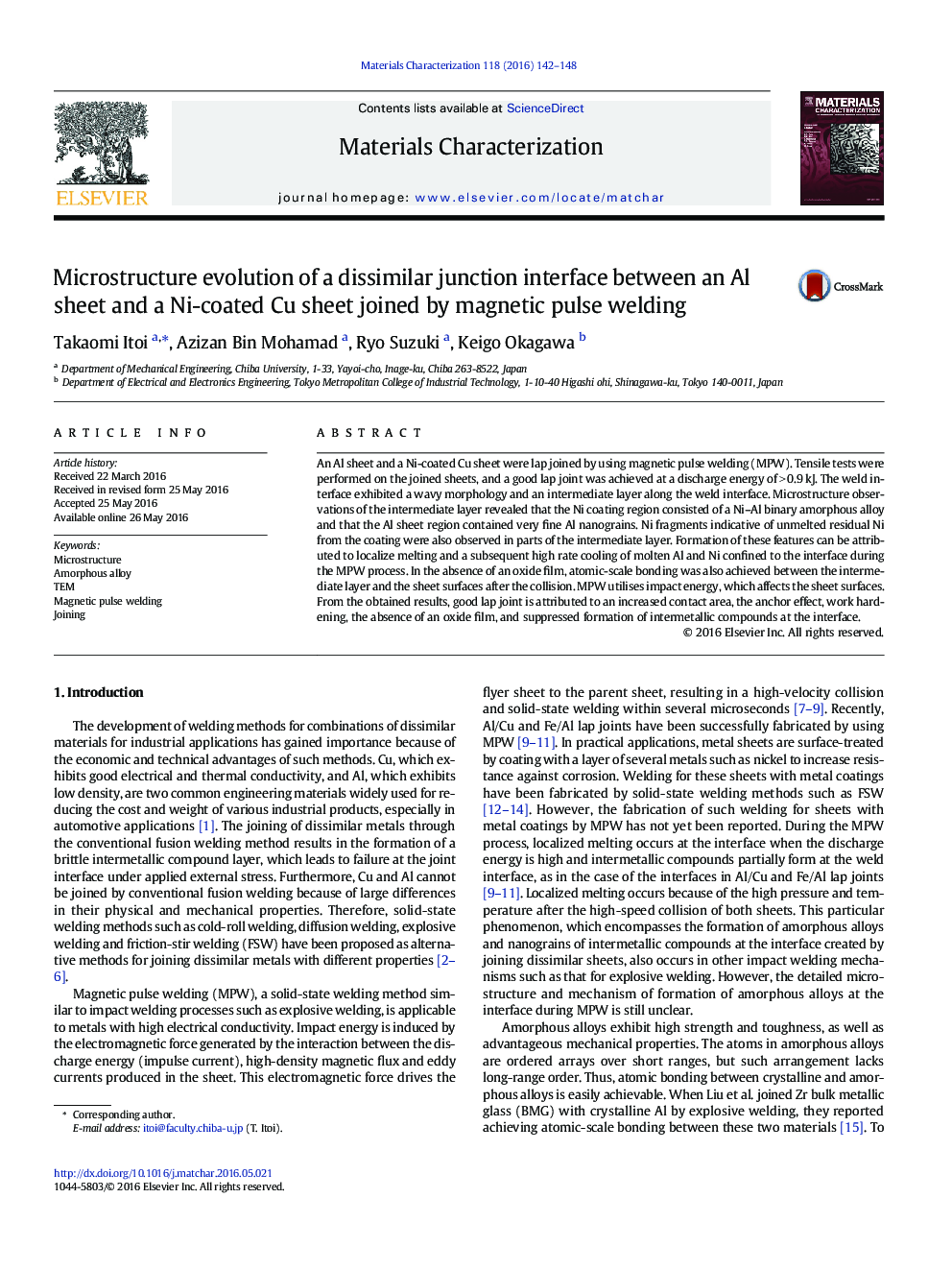| Article ID | Journal | Published Year | Pages | File Type |
|---|---|---|---|---|
| 1570534 | Materials Characterization | 2016 | 7 Pages |
Abstract
An Al sheet and a Ni-coated Cu sheet were lap joined by using magnetic pulse welding (MPW). Tensile tests were performed on the joined sheets, and a good lap joint was achieved at a discharge energy of >Â 0.9Â kJ. The weld interface exhibited a wavy morphology and an intermediate layer along the weld interface. Microstructure observations of the intermediate layer revealed that the Ni coating region consisted of a Ni-Al binary amorphous alloy and that the Al sheet region contained very fine Al nanograins. Ni fragments indicative of unmelted residual Ni from the coating were also observed in parts of the intermediate layer. Formation of these features can be attributed to localize melting and a subsequent high rate cooling of molten Al and Ni confined to the interface during the MPW process. In the absence of an oxide film, atomic-scale bonding was also achieved between the intermediate layer and the sheet surfaces after the collision. MPW utilises impact energy, which affects the sheet surfaces. From the obtained results, good lap joint is attributed to an increased contact area, the anchor effect, work hardening, the absence of an oxide film, and suppressed formation of intermetallic compounds at the interface.
Related Topics
Physical Sciences and Engineering
Materials Science
Materials Science (General)
Authors
Takaomi Itoi, Azizan Bin Mohamad, Ryo Suzuki, Keigo Okagawa,
